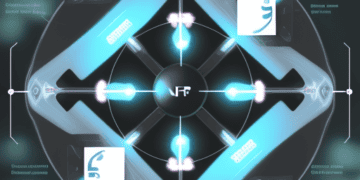Non-Fungible Tokens (NFTs) are cryptographic assets existing on a blockchain that symbolize ownership of tangible or digital assets. Utilizing smart contract technology, NFTs enable the buying, selling, trading, or transfer of these assets. The underlying concept of NFTs has gained prominence with the ascendancy of blockchain and cryptocurrency technologies, altering how we perceive ownership and value in the digital realm.
What Are NFTs? At their core, NFTs are unique digital assets intrinsically linked to real-world or digital entities, unlike cryptocurrencies which are fungible. Fungibility refers to assets being exchangeable without loss of value—like one dollar being equal to another. However, NFTs possess individual and non-interchangeable characteristics, akin to physical assets such as real estate or artwork. These assets are built on blockchain technology, providing them with a clear chain of ownership and immutability.
How Do NFTs Function? NFTs operate within blockchain systems like Ethereum, following standards like ERC-721, enabling the creation and verification of unique assets through smart contracts. The value of an NFT lies in its uniqueness rather than the effort invested in its creation. Creating an NFT involves setting up a smart contract on the blockchain and paying gas fees via a cryptocurrency wallet. This process occurs in marketplaces like OpenSea or Rarible, facilitating the minting and trading of NFTs.
Key Aspects of NFT Functionality:
- Indestructibility and Interoperability: NFTs, stored and managed via blockchain, cannot be destroyed unintentionally. They lack interoperability, ensuring their data remains within the blockchain system.
- Scarcity and Value: Their value is derived from scarcity, where creators determine the rarity of digital assets, resembling unique real-world items.
- Support for Royalty Systems: Smart contracts embedded within NFTs can enforce royalty payments for creators whenever the token is sold or traded.
Applications of NFTs: The versatility of NFTs has sparked interest across various industries, including:
- Play-to-Earn (P2E) Gaming: Enabling tradable in-game assets that players can earn, own, and trade.
- Digital Art Ownership: Transforming digital art into tradable assets, providing artists with ownership rights and royalties.
- Digital Tickets and Memberships: Verifying memberships in digital spaces and communities through NFTs.
- Fraud Prevention in Music: Offering a direct channel for musicians to sell digital music and manage revenue-sharing.
- Virtual Real Estate in Metaverse: Establishing ownership of digital real estate within virtual worlds.
- Proof of Authenticity for Physical Assets: Providing digital proof of ownership for real-world assets.
- Secure Storage of Medical Records: Ensuring secure and unalterable storage of healthcare data.
Examples of NFTs:
- Starbucks’ upcoming loyalty program, Odyssey, combining Starbucks Rewards with NFT collectibles.
- “Everydays: the First 5000 Days,” a digital art piece sold for over $69 million.
- Snoop Dogg’s album “Death Row Session Vol. 2” released entirely as an NFT.
- Candao, showcasing NFTs as a solution for identity and access management.
Conclusion: NFTs represent a transformative leap in digital asset ownership, offering a secure and transparent method of attributing value to intangible items. With their potential to redefine ownership across industries and their integration with the growing metaverse, NFTs hold promise for shaping novel economic landscapes and fostering innovation in digital spaces.
Your source for supply chain logistics news updates: The Supply Chain Report. Enhance your international trade knowledge at ADAMftd.com.
#NFTs #DigitalAssets #BlockchainTechnology #SmartContracts #Ethereum #DigitalArt #P2Egaming #NFTcollectibles #VirtualRealEstate #Metaverse #NFTmusic #NFTtickets #NFTloyalty #Scarcity #Value #CryptoOwnership #RoyaltySystems #DigitalOwnership #Candao #SnoopDoggNFT #StarbucksNFT #NFTinnovation

















